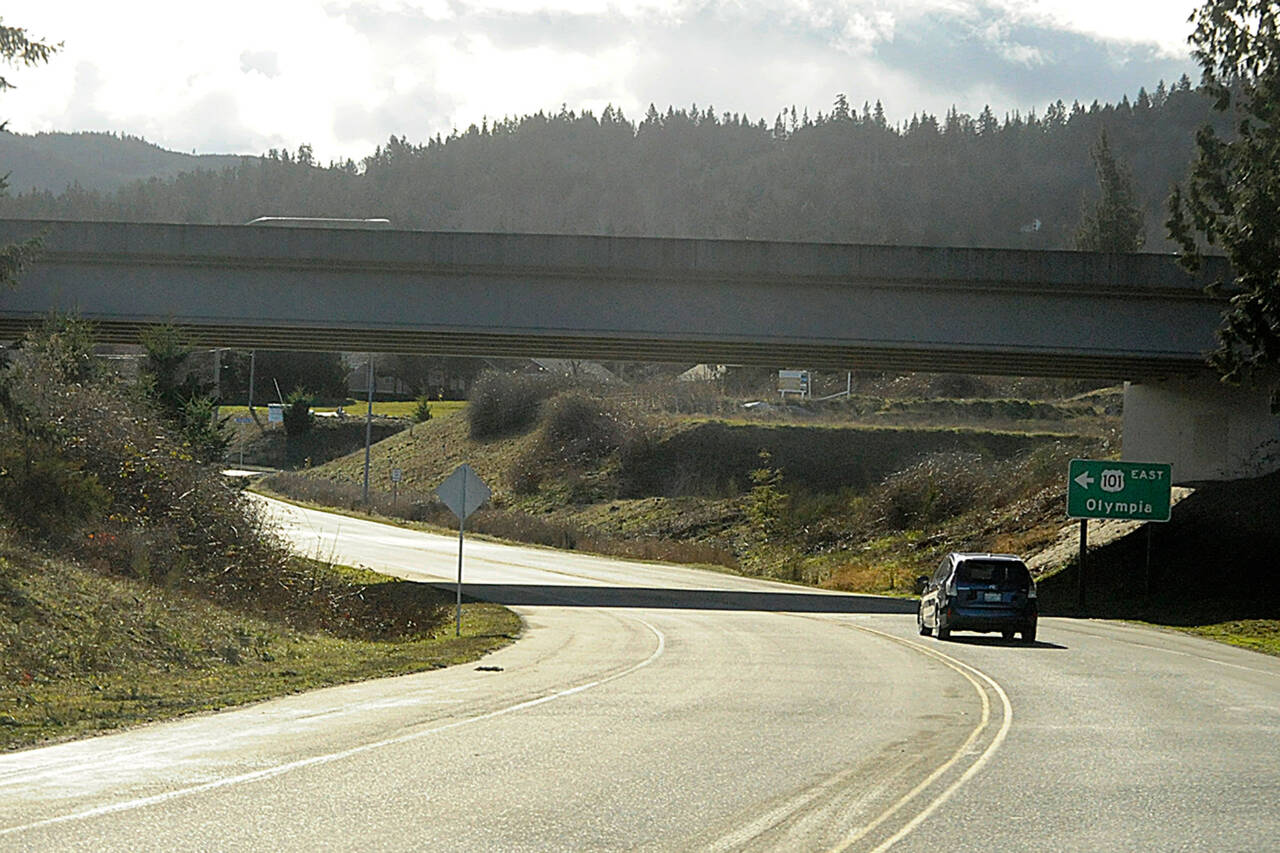Local leaders sent a message to state legislators and state Department of Transportation officials that the Simdars bypass project should be fully funded in the state’s 2025-2027 biennium instead of 2031-2035 and should be built in conjunction with the Johnson Creek culvert replacement project.
The Clallam County commissioners, Sequim City Council and Jamestown S’Klallam Tribe recently sent the request letter.
“I have been partnering with the City of Sequim and the Jamestown tribe to advocate for the city of Sequim’s top priority this legislative session, which is to attempt to encourage coordination of two funded projects along U.S. Highway 101,” county commissioner Mark Ozias told his fellow commissioners at their work session on Jan. 23.
The Simdars Road interchange was originally set for completion with the opening of the 4.6-mile U.S. Highway 101 bypass in August 1999, but the eastbound off-ramp was left incomplete due to a lack of funds.
Completing the interchange has remained a legislative priority for the City of Sequim for several years.
According to the letter, “The project will consist of removing two city road intersections with US 101 and connecting them safely via a frontage road and bridge to a newly completed interchange.
“The frontage road will correct two dangerous intersections and the completed interchange will provide the opportunity for economic development on the east side of Sequim and in Clallam County.
“This project was first envisioned over twenty-five years ago as part of the Sequim bypass, but funding constraints at the time prevented construction.”
The Johnson Creek project involves replacing three culverts to open up 2.4 miles of spawning habitat and 15.6 acres of upstream habitat for coho, steelhead and cutthroat trout.
“Right now both of those projects are funded but not scheduled by WSDOT (Washington State Department of Transportation) to happen concurrently,” Ozias said.
“And we’re really jointly pushing to in hopes that we can have those projects not just funded but actually accomplished concurrently, because there likely will be a cost savings if the road only gets torn up once and if those projects can move forward together,” he added.
County Engineer Joe Donisi said the long-term plan for the intersections is getting them to where they are grade separated — i.e., using an overpass — as opposed to trying to improve them with roundabouts or other constructions.
Ozias said he didn’t know how helpful the letter will be.
“The Legislature seems pretty aware that the Department of Transportation is not aggressively moving forward with trying to do these projects in conjunction with each other,” he said.



